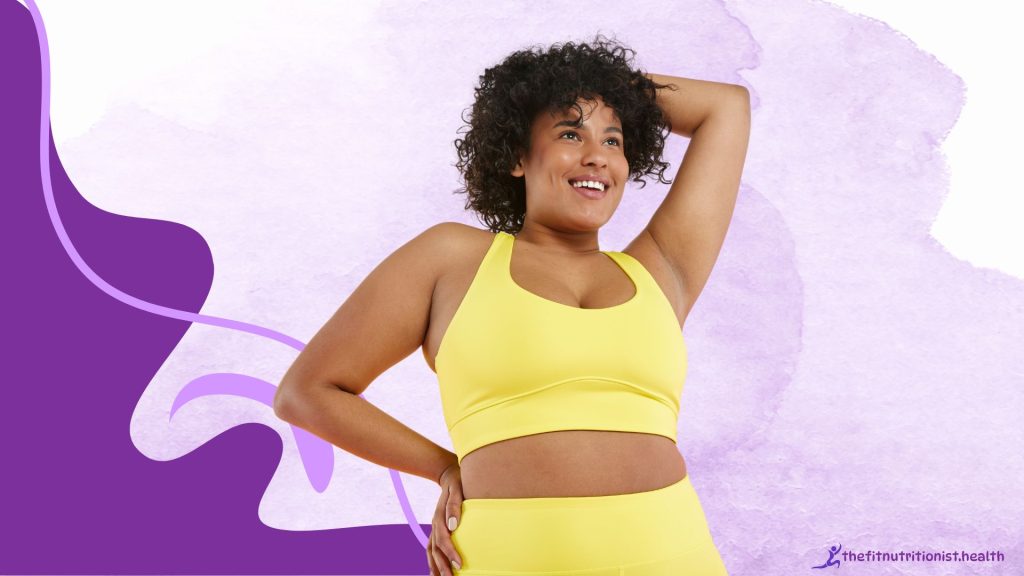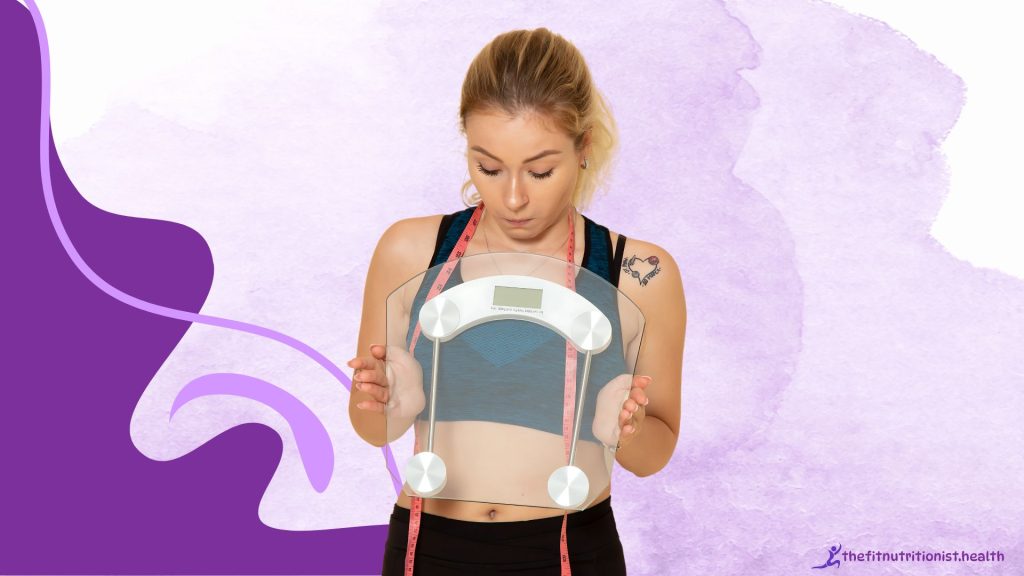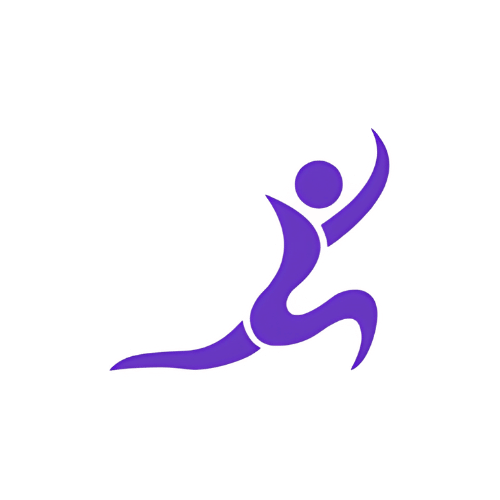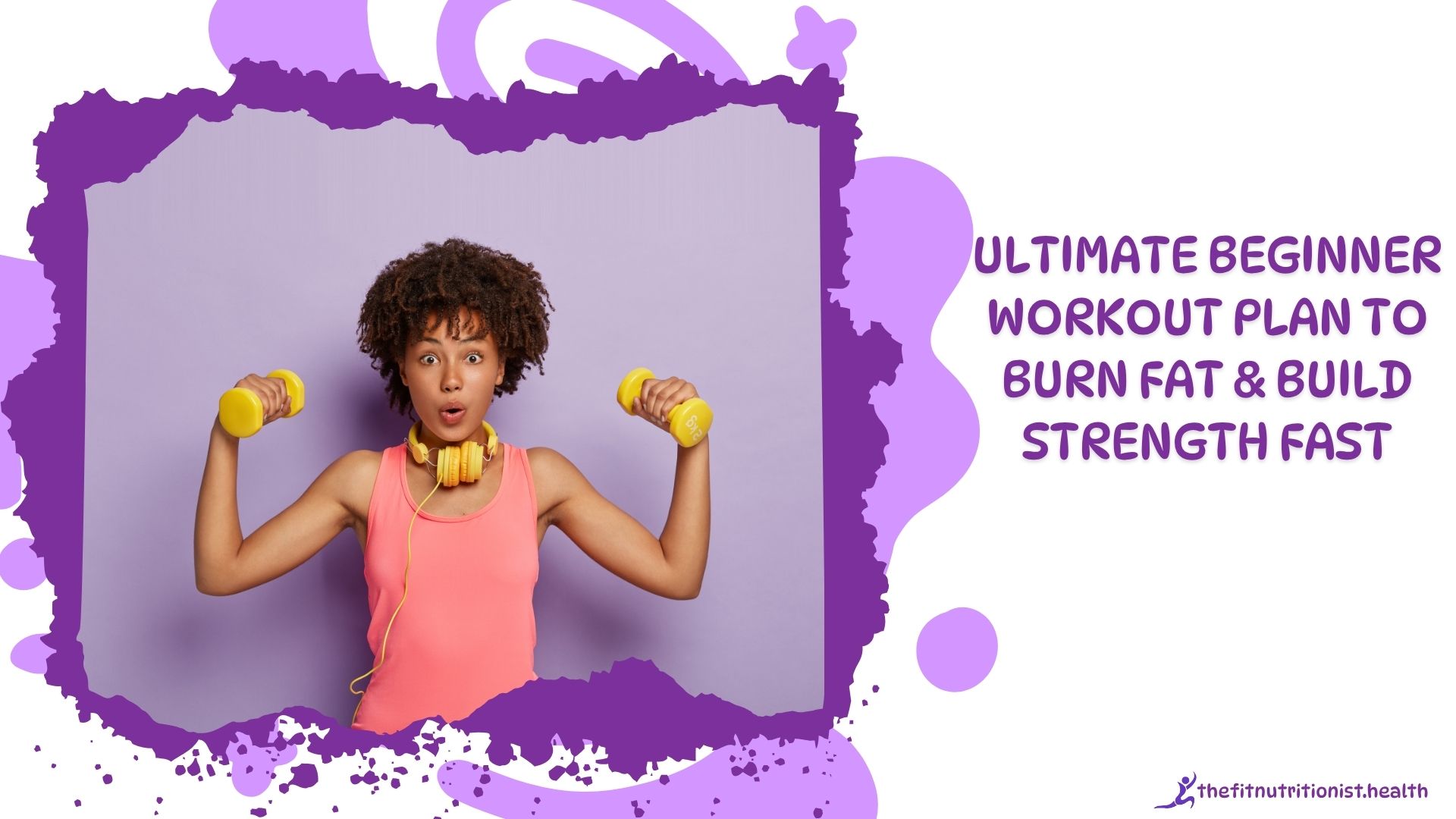Get Started
You’ve decided, this time, you’re getting serious about your beginner workout plan. Maybe it started with not liking what you saw in the mirror, or you want to feel strong for once. Let’s be honest: the fitness industry throws a lot at beginners. It tells you to “just start,” but doesn’t tell you how to stay consistent. It pushes crash diets and 90-minute workouts without teaching you the basics.
But if you’ve tried and failed before, that doesn’t mean you’re lazy or uncommitted; it means you were misinformed. A true beginner workout plan meets you where you are, teaches you why things work, and scales with your progress. The ultimate workout plan pulls insights from real training routines, expert diet strategies, and insider gym tips.
At thefitnutritionist, we offer well-researched and science-backed guides for beginners who want results, without gimmicks. Why is our approach different? Because it starts with the understanding that you are not a one-size-fits-all project. Your schedule, body composition, metabolic state, and lifestyle all influence your fat-loss success. Our plans combine cardio, strength training, and tailored nutrition to help you lose fat and build lean muscle efficiently.
Key Statistics:
- Resistance training can increase resting metabolic rate by 7%.
- Beginners should aim to drink half their body weight in ounces of water daily.
- A 500-calorie daily deficit leads to a fat loss of 1 pound per week.
- One pound of fat equals 3,500 calories.
- Moderate-intensity cardio like Zone 2 walking is ideal for beginners.
- High-protein meals (20–40g) are necessary to stimulate muscle protein synthesis.
- Progressive overload should be applied every 1–2 weeks to continue building muscle and prevent stagnation.
How to Start Your Beginner Workout Plan the Right Way?

Starting your fitness journey may feel overwhelming. Especially when you’re bombarded with contradicting advice, intense routines, and trendy shortcuts. They all promise everything but deliver nothing. As a beginner, you don’t need to start with extremes. You need a beginner workout plan that lays a foundation for both fat loss and strength gain. A customized health plan helps you build a strategy that fits your life, your goals, and your body.
Understanding the 4-Day Workout Split
A good example of a beginner workout plan follows a 4-day training split. This is designed to balance strength gains and fat-burning. It alternates between upper and lower body sessions 2 of each, every week. One version (Workout A) focuses on heavy, low-rep lifts for muscle building. The second version (Workout B) uses higher reps and lighter weights to boost endurance and calorie burn. This strategic switch keeps your workouts fresh and challenges different muscle fibers throughout the week.
Each session includes compound lifts such as goblet squats, dumbbell presses, and walking lunges. These multi-joint movements burn more calories and build more muscle than isolation exercises. You only need 45–60 minutes per workout. That means just 4 hours per week to see fat loss, strength gains, and increased metabolism. This is how beginners succeed. They show up consistently for short, focused sessions that deliver long-term results.
How Cardio Complements Your Workout Plan
Cardio supports fat loss and boosts cardiovascular health. 20–30 minutes of cardio is recommended on most days, either on rest days or after your weight sessions. The goal is to build stamina and help burn extra calories, especially from stored fat. Zone 2 cardio is best for beginners. It’s low-intensity, steady-state activity such as walking, stair climbing, or using a machine at moderate effort. Why? Because beginners benefit most from sustainable activity. Increasing daily step counts or doing cardio sessions in the morning or evening, separate from strength workouts. But if time is tight, doing it after weight training works too.
Nutrition: The Real Fat Burner
Nutrition makes or breaks your beginner workout plan. You can train like an athlete, but without the right fuel, you’ll stall or even gain fat. Calculate your Basal Metabolic Rate (BMR), and subtract 500 calories to create a fat-loss deficit. Then, follow a consistent eating strategy using whole foods.
Here’s the rule: if your daily calories burned exceed your intake by 500, you’ll lose about 1 pound of fat weekly. Why? Because 1 pound of fat equals roughly 3,500 calories. That’s real, actionable math. A great beginner workout plan places nutrition first for that reason. You can’t out-train a bad diet. You’ll eat lean proteins to repair muscle, complex carbs for workout fuel, and healthy fats to support hormones and satiety. Beginners who follow this guideline often start seeing noticeable changes in 3–4 weeks, even if the scale doesn’t move drastically.
Hydration: Fuel for Performance
Water is central to performance, fat loss, and recovery. A good beginner workout plan urges beginners to drink at least half their body weight in ounces of water daily. That means if you weigh 180 pounds, you need 90 ounces of water, minimum. This keeps your metabolism efficient, supports digestion, and prevents fatigue during workouts.
Drink most of your water in the morning. This limits nighttime bathroom interruptions and helps maintain energy throughout the day. Hydration also improves joint function and helps your muscles contract properly during lifts. Don’t wait until you’re thirsty; that’s already a sign of dehydration. Make water part of your routine, just like stretching or meal prep. Proper hydration is one of the easiest ways to enhance every aspect of your training.
Smart Recovery = Better Results
Recovery is not optional. It’s essential. First, aim for 8 hours of sleep per night. Your muscles repair and grow during sleep, not during training. Skimping on rest slows your progress and increases injury risk. Second, include stretching and mobility exercises after every workout. This boosts blood flow, reduces soreness, and prepares your body for your next session. Consider meditation or stress-reducing activities, too. Your mental state affects your physical results.
Supplements such as protein, creatine, and a multivitamin are recommended to support your recovery. While optional, these can bridge nutritional gaps and boost performance. A Beginner workout plan that respects your recovery builds better habits, faster strength, and deeper fat loss.
Health Pro Tips:
- Consistency Beats Intensity: Stick to the plan, even if you’re not pushing max effort every day.
- Timing Matters: Do cardio after weights for better fat burn.
- Water First, Supplements Second: Hydrate before taking fat burners or pre-workout.
- Form First, Then Weight: Poor form leads to injuries and stalls progress.
How Beginners Match Workouts to Body Fat Percentage?

Not all beginners start from the same place, this matters more than most people realize. Your current body fat percentage can directly influence how your body responds to training. Knowing where you stand helps you choose a workout plan that works with your physiology, not against it. Thefitnutritionist offers professional tools and personalized assessments to get you started.
Why Your Starting Point Matters
Your current body fat percentage affects how your body prioritizes fat loss, muscle building, or both. When you’re between 18% and 28%, your body responds well to a recomposition strategy. Simultaneously burning fat and building muscle. But if you’re above 30%, you’ll benefit most from targeting fat loss first. In that state, the body holds more visceral fat, and hormonal patterns often reduce muscle-building efficiency.
How to Accurately Measure Body Fat
There are several ways to determine your body fat percentage. This includes practical methods like skinfold calipers or a smart body composition scale. Calipers, when used consistently, are affordable and reasonably accurate if applied by someone trained. Smart scales use bioelectrical impedance to estimate body fat and muscle mass.
The most important rule: pick one method and stick to it. Consistency matters more than perfection. Your progress depends on tracking changes over time, not jumping between tools. Once you establish your baseline, you can adjust your training, nutrition, and cardio accordingly. Avoid obsessing over one number. Focus on trend lines, how your clothes fit, and how you feel during workouts. These signs are just as important as the scale.
Nutrition Strategies Based on Body Fat
Customize your nutrition to match your current body fat:
- If your body fat is high (30%+): Use a lower-carb, moderate-protein approach. Focus on eating whole foods and creating a 500-calorie deficit daily. This reduces fat stores efficiently without starving your body.
- If you fall in the average range (18–29%): Your body can handle more carbs. Use balanced macros with protein at every meal to support strength and energy. Aim for 20–40 grams of high-quality protein per meal to trigger muscle protein synthesis.
- For those under 18%: Increase calories slightly to support lean mass. Eat higher-carb meals, especially around training. Keep protein high and fats moderate.
Regardless of where you fall, all beginners need to hit a baseline of at least 20g of protein per meal. This supports recovery and enhances body composition changes.
Pop Quiz
Alright, let’s have a little fun. You’ve been absorbing workouts, breaking down macros, and learning about protein timing. Maybe even squeezing in squats between Zoom calls. Now it’s time for a quick reality check…Are you crushing it, or just kind of winging it? (No judgment. We’ve all been there.)
Here’s why it’s awesome:
- It’s fast. Like under-five-minutes fast.
- It’s fun. You’ll low-key laugh, nod, and say, “Oh wow, I didn’t know that.”
- It’s educational. You’ll walk away smarter than when you started.
- It’s helpful. You’ll get clear, actionable tips based on your answers.
And best of all? You don’t have to study. Just bring your brain, your honesty, and your curiosity. Because the more you know, the better your beginner workout plan works, and the faster you see results. Take this Health Quiz now, let’s put your fitness brain to the test.
FAQs on Beginner Workout Plans
What’s the best beginner workout plan? One that includes resistance training, cardio, and nutrition support. A 4-day split hits all the right muscles without overwhelming you.
How should a beginner start working out? Begin with 3–4 sessions a week. Focus on full-body movements, rest, and smart nutrition.
What is the 3-3-3 rule gym? It’s a trending structure: 3 reps, 3 sets, 3-second tempo per lift. Great for tempo control, but not essential for all beginners.
What is the 6-12-25 rule? Used in hypertrophy: 6 reps heavy, 12 moderate, 25 light. Not beginner-specific but great for advanced muscle work.
How to transform body in 1 month? With consistency, a caloric deficit, and progressive workouts. Expect fat loss, not miracles. One month is a foundation.
How to reduce belly fat? You can’t spot-reduce fat, but a calorie deficit, strength training, and sleep all help trim your waist.
Start Your Beginner Workout Plan Now
The first step is showing up. The next is following a smart, simple plan consistently. At thefitnutritionist, our beginner workout plan isn’t built on training theory; it was built on your reality. We meet you where you are, whether you’re overweight, overwhelmed, or simply unsure. We help you build momentum with just the tools you have. Let your first step be your strongest. Get your custom health plan today, and finally turn your goals into wins.


Hi, this is a comment.
To get started with moderating, editing, and deleting comments, please visit the Comments screen in the dashboard.
Commenter avatars come from Gravatar.